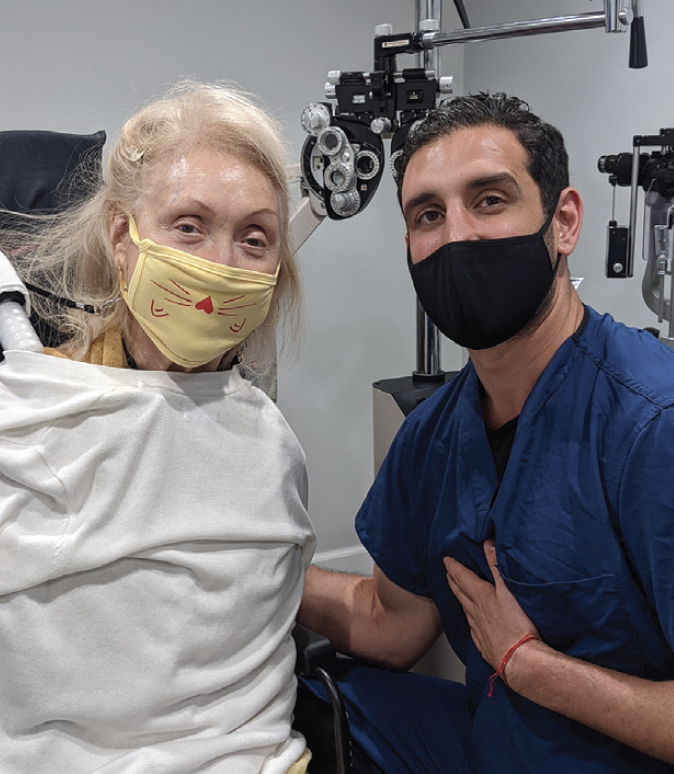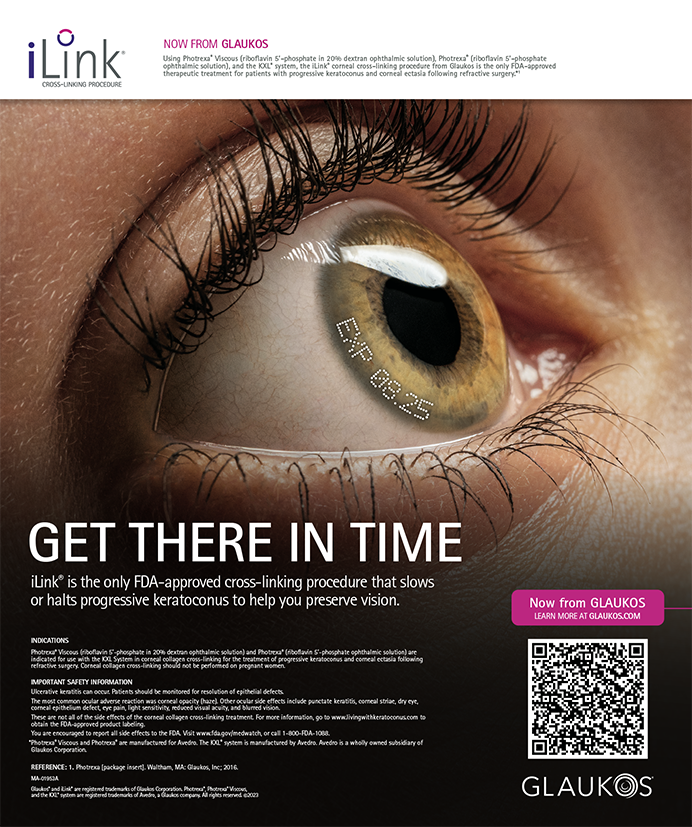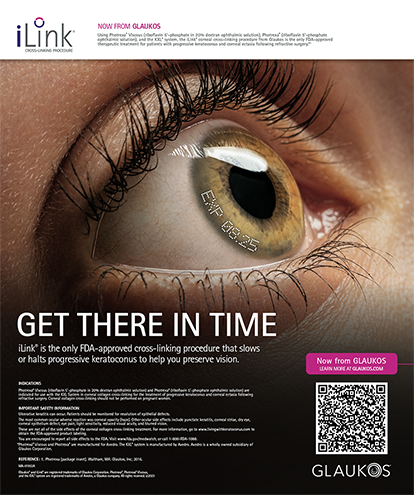
Some patients who are interested in a premium IOL cannot afford the associated out-of-pocket cost, and ophthalmologists usually don’t hesitate to select a monofocal IOL for them. There are exceptions, however, such as an inspiring woman I operated on recently whose physical circumstances would benefit greatly from the vision afforded by premium IOLs.
The patient experienced a rare and debilitating form of polio at the age of 11 years that left her mostly paralyzed from the neck down except for her left leg. Despite her physical challenges, the patient exhibits a joy for life that gives me goosebumps. She writes and paints with her left foot, and she has earned several degrees, including a PhD in Latin American literature from the University of Southern California. Many years ago, she traveled to France to participate in an advanced French studies program. Today, she volunteers as a language teacher for people who wish to become US citizens.
FROM ROUTINE CARE TO CATARACT CONSULT
The patient first came to my clinic in 2020 for routine eye care. At that time, she described having difficulty soothing her itchy eyes because she does not have the ability to rub them herself. Diagnostic testing revealed signs of dry eye disease and meibomian gland dysfunction. I provided several interventions, including the placement of punctal plugs and treatment with the LipiFlow Thermal Pulsation System (Johnson & Johnson Vision) and BlephEx (BlephEx), free of charge because she has social security disability insurance and couldn’t afford treatment.
In 2021, the patient reported that her vision was deteriorating and that she was having difficulty with her vision at different distances. She was relying on several pairs of corrective glasses and depended on her caretaker to switch them out for her anytime she wanted to change tasks.
On examination in July 2021, the patient’s BCVA had decreased to 20/40 owing to 3+ nuclear sclerotic cataracts with cortical spokes. When I counseled her on the different lens options, she articulated that her quality of life would improve drastically if she no longer needed glasses or at least could wear just one pair. We discussed the pros and cons of myriad premium IOLs, but ultimately the patient was interested in the AcrySof IQ PanOptix IOL (Alcon) because it would give her the best chance of spectacle independence.
A VALUABLE LESSON
When I spoke with my surgical scheduler, I learned that the patient had selected a monofocal IOL owing to the cost differential of surgery with a premium IOL. I knew how important spectacle independence was to the patient, and I remembered a valuable lesson I learned during my fellowship with William F. Wiley, MD: Always treat patients at the highest level you can and aim to make their vision as good as possible, even if it means providing an additional service at no cost to them. I therefore waived my surgeon fee for the patient and asked my practice’s Alcon representative if the company would donate the PanOptix IOLs for both of the patient’s eyes. The company agreed, and I performed the patient’s cataract surgeries 1 week apart.
The patient’s physical condition and need for a ventilator complicated the positioning of her head and neck and the use of anesthesia, respectively. With the help of my great OR team, however, I was able to position her in a way that facilitated a safe surgical technique. The Optiwave Refractive Analysis System (Alcon) was used to guide selection of the best IOL power.
Given the patient’s disability, I instilled additional antibiotic and steroid medications intracamerally and subconjunctivally, and I reviewed the directions for drop use with her caregiver after surgery. One day after her second eye surgery, the patient’s UCVA was 20/20 OU. She had healed perfectly. The patient was thrilled with the outcome (Figure).

Figure. Dr. Moarefi with the patient.
CONCLUSION
At times, surgeons feel called to go above and beyond routine care for the greater good of their patients. I wouldn’t have felt right had I implanted IOLs in my patient’s eyes that left her dependent on her caretaker for her visual needs.
The patient was moved to tears by her successful surgical outcome, and I could look at myself in the mirror and know that I did everything I could to improve her overall quality of life. Little does she know how much her positive outlook on life means to me.




